British Shorthair
- February 15, 2024
- 0 comment
The British Shorthair is a beloved breed renowned for its distinctive appearance and amiable nature. Originating from the streets of Britain, these cats have a rich history dating back to ancient times. With their round faces, sturdy bodies, and dense coats, British Shorthairs exude an aura of strength and charm. Originally bred for their hunting prowess, they have evolved into affectionate and loyal companions, making them a popular choice for households worldwide
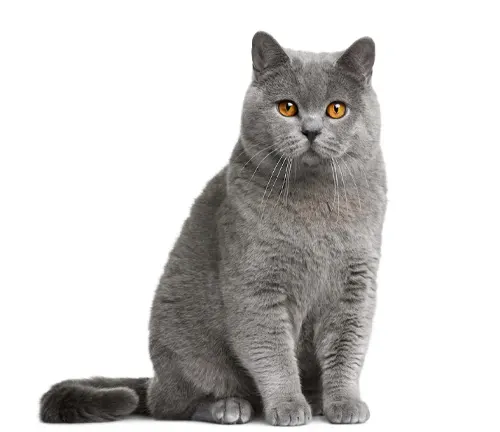
. Their calm and laid-back demeanor, coupled with their gentle and tolerant nature, makes them well-suited for families with children or other pets. Despite their independent streak, British Shorthairs enjoy the company of their human companions and thrive in stable and loving environments. With their wide array of coat colors and patterns, ranging from solid blues to various tabby variations, each British Shorthair possesses a unique and captivating personality. Whether lounging on a sunny windowsill or engaging in playful antics, these feline companions bring joy and companionship to those fortunate enough to share their lives with them.
| Specifications | Description |
|---|---|
| Origin | Britain |
| Coat | Short, dense, plush coat |
| Body Type | Sturdy and muscular |
| Head Shape | Round with a short, snub nose |
| Eye Color | Typically gold or copper |
| Weight | Typically 9-18 pounds for males, 7-12 pounds for females |
| Lifespan | Average lifespan of 12-20 years |
| Temperament | Calm, laid-back, affectionate, and adaptable |
| Grooming Needs | Minimal grooming required; regular brushing to remove loose hair and prevent matting |
| Dietary Requirements | Balanced diet consisting of high-quality cat food tailored to nutritional needs |
| Health Concerns | May be prone to obesity, dental issues, and heart disease; regular veterinary check-ups recommended |
| Exercise Needs | Moderate exercise required; interactive play sessions and access to cat toys for mental and physical stimulation |
| Living Environment | Suited for both indoor and outdoor living; access to a safe outdoor enclosure recommended for outdoor exploration |
| Compatibility | Good with families, children, and other pets; tolerant and adaptable to various household environments |
| Colors and Patterns | Wide variety of coat colors and patterns, including solid, tabby, and colorpoint variations |
British Shorthair: Your Guide to this Beloved Feline Breed
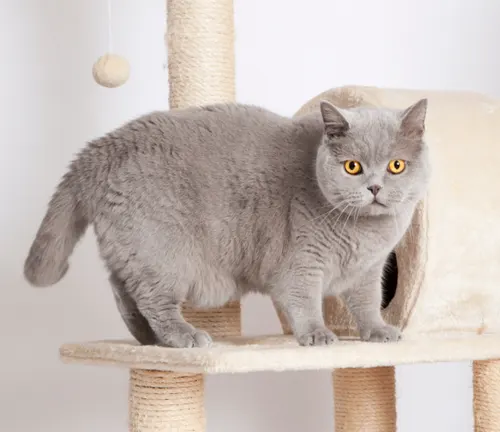
British Shorthair cats are renowned for their distinctive appearance and amiable nature. Originating from the streets of Britain, these felines have become cherished companions in households worldwide. In this comprehensive guide, we’ll delve into the various aspects of British Shorthairs, from their physical traits to their unique personalities, providing valuable insights for both current and prospective owners.
History and Origin of British Shorthair
Overview of the Breed
The British Shorthair is a distinguished feline breed known for its robust build, round face, and dense coat. Renowned for its calm demeanor and affectionate nature, the British Shorthair makes an excellent companion for families and individuals alike. With their plush coat available in various colors and patterns, these cats are not only charming but also adaptable to different living environments. Their low grooming needs and moderate exercise requirements make them easy to care for, further enhancing their appeal as cherished pets.
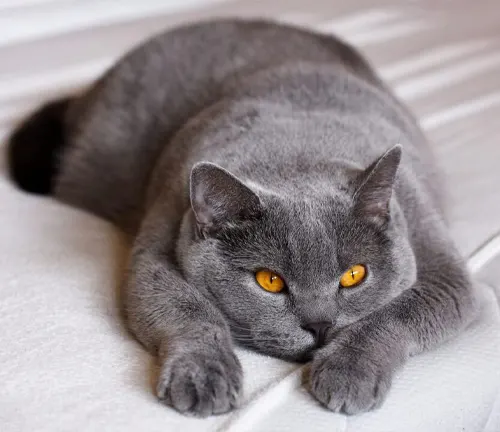
Historical Background
The history of the British Shorthair dates back centuries, with its origins rooted in ancient Rome. These cats eventually made their way to Britain, where they thrived and became an integral part of British society. During the 19th century, the breed gained prominence in Britain, becoming a favorite among cat enthusiasts and exhibitors. Despite facing challenges during World War II, the British Shorthair persevered, thanks to the dedication of breeders who worked tirelessly to preserve its unique characteristics. Today, the British Shorthair continues to be a beloved breed with a rich history and enduring popularity.
Physical Characteristics
Appearance
The British Shorthair is characterized by its sturdy and muscular build, round face, and short snub nose. With a broad chest and sturdy legs, these cats exude a sense of strength and solidity. Their large, round eyes are typically gold or copper in color, adding to their endearing expression. Overall, the British Shorthair’s appearance is that of a well-balanced and proportioned cat, with a compact body and a gentle demeanor.
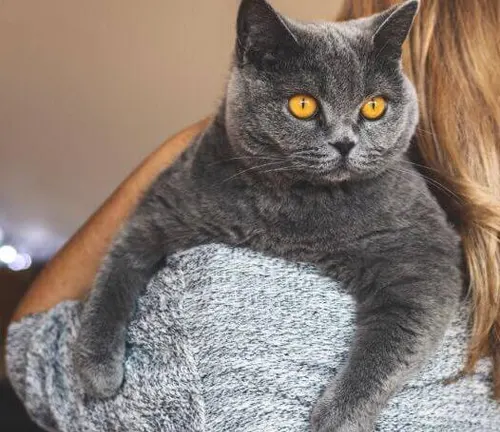
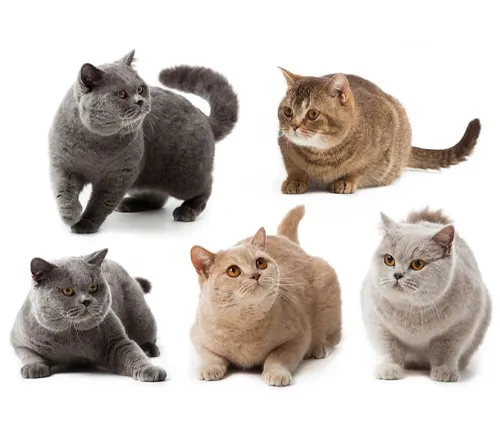
Coat Colors and Patterns
One of the remarkable features of the British Shorthair is the wide array of coat colors and patterns available within the breed. These cats come in a variety of solid colors, including blue, black, white, cream, red, and chocolate. Additionally, British Shorthairs can exhibit various tabby patterns, such as classic tabby, mackerel tabby, spotted tabby, and ticked tabby. Other color variations include bicolor, tortoiseshell, calico, silver shaded, and golden shaded.
Temperament and Personality
Behavior Traits
British Shorthairs are known for their calm and laid-back demeanor, making them excellent companions for families and individuals alike. They have a gentle and tolerant nature, which allows them to adapt well to various living environments. Despite being independent cats, British Shorthairs enjoy the company of their human companions and are often found lounging nearby or seeking out affection. They are not overly vocal but may communicate with soft chirps or meows to express their needs or desires. British Shorthairs are also known for their intelligence and can be trained to learn basic commands and behaviors, particularly through positive reinforcement techniques.
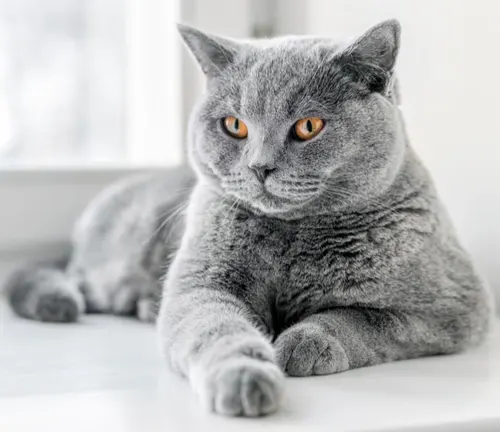
Compatibility with Families
British Shorthairs are highly compatible with families, including children. Their calm and patient demeanor makes them well-suited for households with young children, as they can tolerate gentle handling and noisy environments. These cats are known for their affectionate nature and often form strong bonds with their human family members. Additionally, British Shorthairs typically get along well with other pets, including dogs and other cats, making them a versatile choice for multi-pet households. Overall, their adaptability, gentle temperament, and affectionate personality make British Shorthairs wonderful companions for families seeking a loving and loyal pet.
Care and Maintenance
Grooming Needs
British Shorthairs have relatively low grooming needs compared to some other breeds. Their dense, plush coat requires regular brushing to remove loose hair and minimize shedding. A weekly brushing session with a soft-bristled brush or grooming mitt is usually sufficient to keep their coat in good condition. During shedding seasons, such as spring and fall, more frequent brushing may be necessary to manage excess hair. Additionally, occasional nail trimming, ear cleaning, and dental care are recommended to maintain their overall health and hygiene. Despite their short coat, British Shorthairs may still benefit from occasional baths to keep their fur clean and free of dirt or debris.
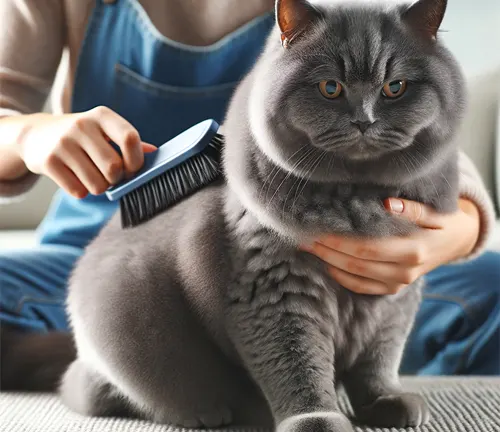
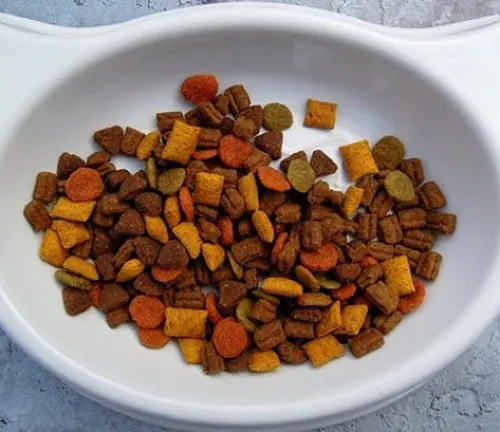
Dietary Requirements
A balanced diet is essential for the health and well-being of British Shorthairs. High-quality cat food that is specifically formulated to meet their nutritional needs is recommended. Look for cat food that contains a balance of protein, fat, carbohydrates, vitamins, and minerals to support their overall health. Fresh water should always be available to keep them hydrated. British Shorthairs may have specific dietary requirements based on factors such as age, weight, activity level, and any underlying health conditions. It’s important to consult with a veterinarian to determine the best diet plan for your British Shorthair and to monitor their weight and overall condition regularly. Avoid overfeeding and provide appropriate portion sizes to prevent obesity and maintain a healthy body weight.
Health Concerns
Common Health Issues
While British Shorthairs are generally healthy cats, like all breeds, they may be prone to certain health issues. Some of the common health issues that British Shorthairs may experience include:
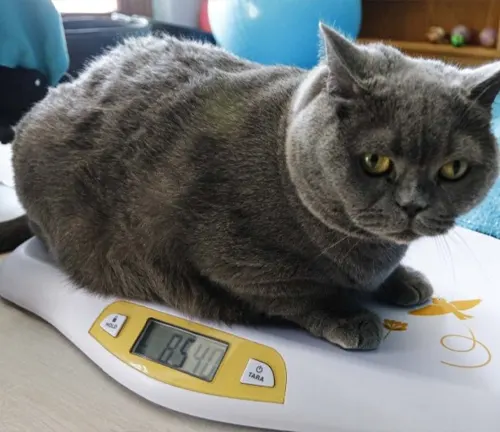
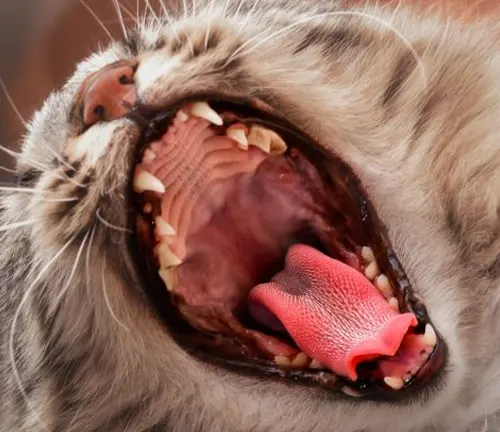
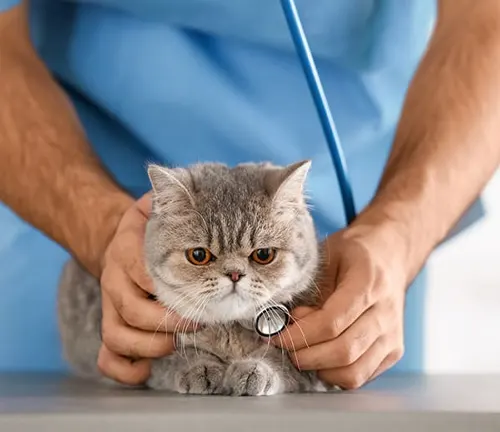
- Obesity: British Shorthairs have a tendency to gain weight if not provided with proper diet and exercise, which can lead to obesity and associated health problems.
- Dental Issues: Dental problems such as gingivitis and periodontal disease can occur if dental hygiene is neglected.
- Heart Disease: Hypertrophic cardiomyopathy (HCM) is a common heart condition seen in British Shorthairs and other cat breeds.
- Urinary Tract Issues: British Shorthairs may be prone to urinary tract infections or urinary blockages, especially in males.
- Polycystic Kidney Disease (PKD): This genetic condition can affect British Shorthairs, leading to kidney dysfunction.
Preventive Measures
To help prevent these health issues and promote the overall well-being of your British Shorthair, consider the following preventive measures:
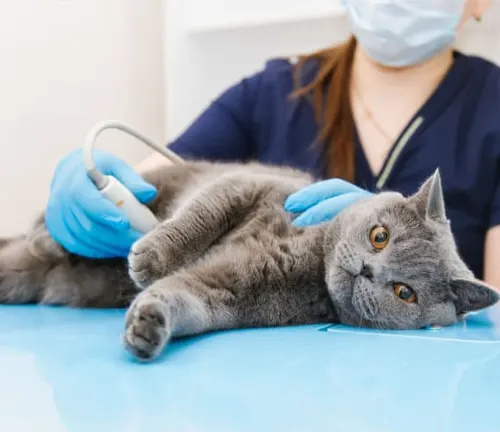
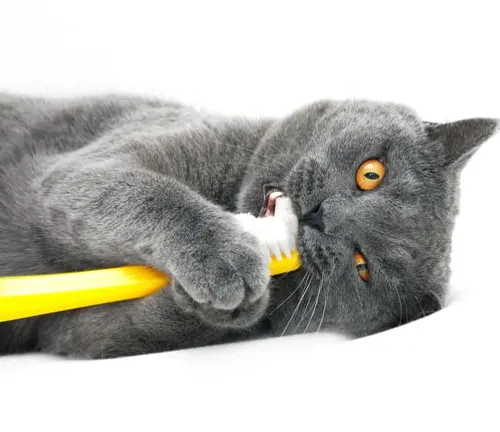
- Regular Veterinary Check-ups: Schedule regular check-ups with a veterinarian to monitor your cat’s health and catch any potential issues early.
- Healthy Diet: Provide a balanced and nutritious diet tailored to your British Shorthair’s specific needs, and avoid overfeeding to prevent obesity.
- Dental Care: Practice good dental hygiene by brushing your cat’s teeth regularly and providing dental treats or toys to help prevent dental issues.
- Weight Management: Monitor your cat’s weight and ensure they get enough exercise to maintain a healthy body weight.
- Stress Reduction: Minimize stressors in your cat’s environment and provide plenty of mental and physical stimulation to promote overall well-being.
- Hydration: Ensure your cat has access to fresh water at all times to help prevent urinary tract issues and promote kidney health.
- Genetic Testing: Consider genetic testing for conditions such as PKD if you plan to breed your British Shorthair to help prevent passing on hereditary diseases.
Training Tips
Obedience Training
Obedience training is an important aspect of caring for a British Shorthair cat. While they are generally intelligent and quick learners, it’s essential to start training early to establish good behaviors and habits. Positive reinforcement techniques, such as using treats and praise, are effective methods for teaching obedience commands to British Shorthairs. Begin with basic commands like “sit,” “stay,” and “come,” and gradually progress to more advanced commands as your cat becomes more comfortable and confident. Keep training sessions short, fun, and rewarding to maintain your cat’s interest and motivation. Consistency and patience are key when training a British Shorthair, and always remember to be gentle and encouraging to build a strong bond with your cat.
Socialization
Socialization is equally important for British Shorthairs to ensure they grow up to be well-adjusted and confident cats. Start socializing your kitten from a young age by exposing them to various people, environments, and experiences. Introduce them to different sounds, sights, and smells, as well as other animals and pets if possible. Positive experiences during the socialization period will help your British Shorthair develop into a friendly and sociable adult cat. Encourage interactions with family members and visitors, but always supervise interactions with children and other pets to ensure safety and prevent any negative experiences. By providing plenty of positive experiences and social interactions, you can help your British Shorthair become a happy, confident, and well-rounded companion.
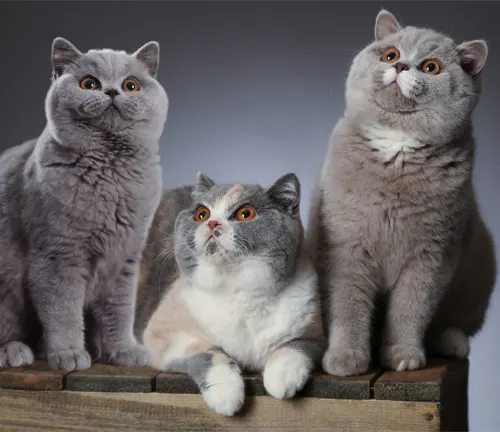
Living Environment
Ideal Home Setup
British Shorthairs thrive in a calm and stable environment with plenty of cozy spots for lounging and observing their surroundings. Providing a safe outdoor enclosure or access to a secure garden allows them to explore while remaining protected.
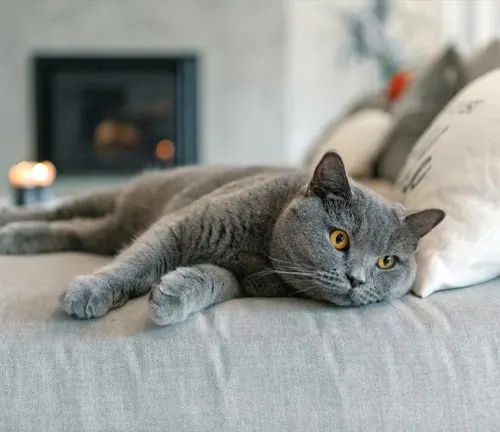
Indoor vs. Outdoor Considerations
While British Shorthairs can adapt to indoor living, they may enjoy supervised outdoor access if it’s safe and secure. However, precautions should be taken to prevent accidents and exposure to potential hazards.
Different Species
Solid Colors
These British Shorthairs have a single solid color throughout their coat. Common solid colors include blue, black, white, cream, red, and chocolate.
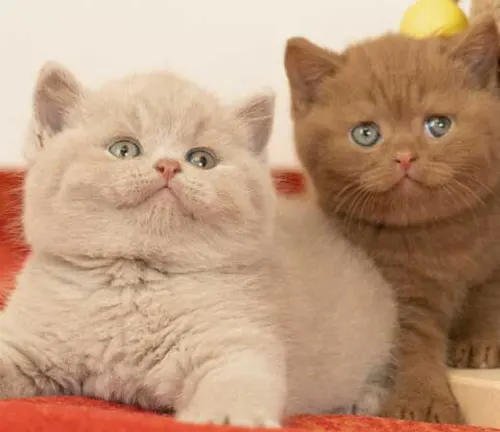
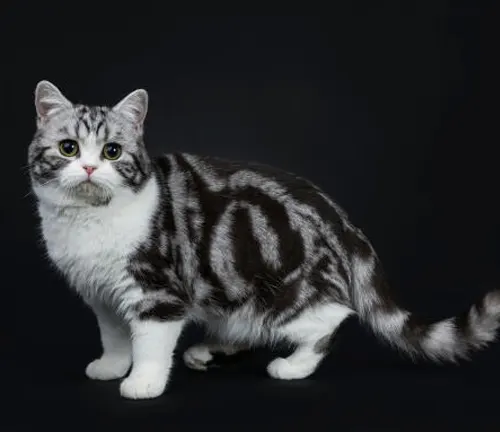
Tabby Patterns
Tabby British Shorthairs have distinctive striped or swirled patterns on their coat. There are several types of tabby patterns, including classic tabby, mackerel tabby, spotted tabby, and ticked tabby.
Bicolor
Bicolor British Shorthairs have a coat that is predominantly white with patches of another color, such as black, blue, cream, or red. The color patches are usually on the head and body, with white markings on the legs, chest, and belly.
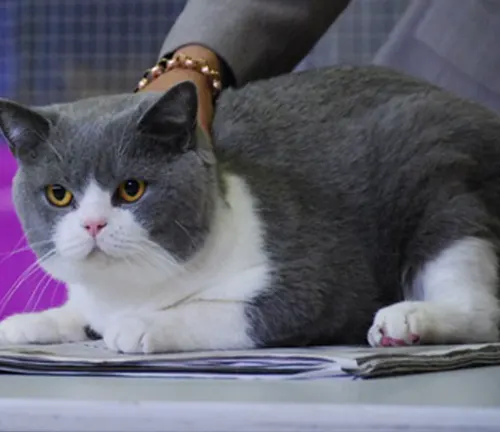
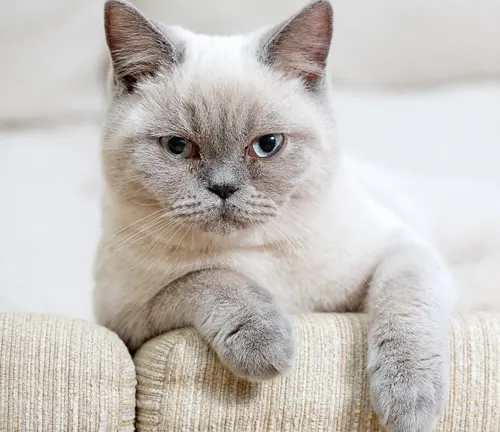
Colorpoint
Colorpoint British Shorthairs, also known as “pointed” cats, have a lighter body color with darker points on the ears, face, paws, and tail. Common colorpoint colors include seal point, blue point, chocolate point, and lilac point.
Tortoiseshell and Calico
Tortoiseshell British Shorthairs have a mix of two or more colors, typically black and orange, in a mottled or brindle pattern. Calico British Shorthairs have a combination of white, black, and orange patches in their coat.
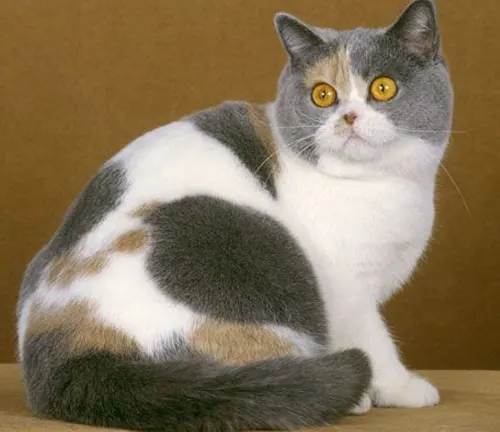
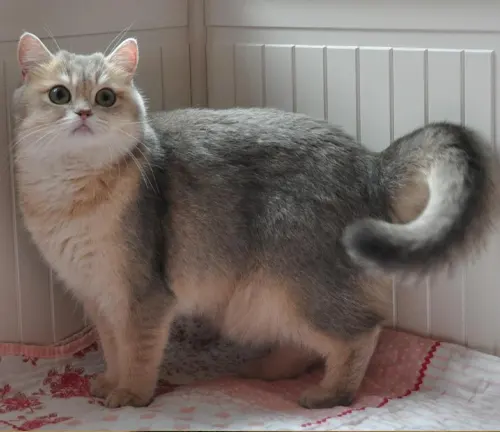
Silver and Golden Shaded
Silver and golden shaded British Shorthairs have a silver or golden base color with darker tipping, giving them a shimmering or sparkling appearance.
Frequently Asked Questions (FAQs)
- Are British Shorthairs hypoallergenic?
No, British Shorthairs are not considered hypoallergenic. While they may produce fewer allergens than some other breeds due to their dense, plush coat, they still shed dander and can trigger allergic reactions in sensitive individuals. - What is the average lifespan of a British Shorthair?
The average lifespan of a British Shorthair is typically between 12 to 20 years with proper care and attention. - Do British Shorthairs require a lot of grooming?
British Shorthairs have low grooming needs compared to some other breeds. A weekly brushing session is usually sufficient to remove loose hair and minimize shedding. However, during seasonal changes, they may require more frequent grooming to manage shedding. - Are British Shorthairs good with children?
Yes, British Shorthairs are generally good with children. They have a calm and tolerant nature, making them suitable companions for families with kids. However, it’s essential to teach children how to interact gently and respectfully with cats to ensure a harmonious relationship. - Do British Shorthairs get along with other pets?
Yes, British Shorthairs typically get along well with other pets, including dogs and other cats. They have a laid-back temperament and can adapt to sharing their space with other animals with proper introductions and socialization. - What kind of diet is suitable for a British Shorthair?
A balanced diet consisting of high-quality cat food is suitable for British Shorthairs. It’s essential to provide them with a nutritionally complete diet that meets their dietary requirements for optimal health and well-being. - How much exercise do British Shorthairs need?
British Shorthairs have moderate exercise needs. They enjoy interactive play sessions and toys that stimulate their hunting instincts. Providing them with opportunities for physical activity and mental stimulation helps keep them healthy and happy. - Are British Shorthairs prone to any health issues?
While British Shorthairs are generally healthy cats, they may be prone to certain health issues such as obesity, dental problems, and heart disease. Regular veterinary check-ups and preventive care can help detect and manage any potential health concerns. - Do British Shorthairs need to be kept indoors or can they go outside?
British Shorthairs can adapt to both indoor and outdoor living environments. However, it’s essential to provide them with a safe and secure outdoor space if they have access to the outdoors to prevent accidents and exposure to potential hazards. - Do British Shorthairs have any specific behavioral traits?
Yes, British Shorthairs are known for their calm and laid-back demeanor. They are independent yet affectionate, enjoying the company of their human companions without being overly demanding. - Are British Shorthairs vocal cats?
British Shorthairs are not typically known for being vocal compared to some other breeds. They may communicate with soft chirps or meows, but they are generally quiet and reserved. - Do British Shorthairs require a lot of attention and companionship?
While British Shorthairs enjoy spending time with their human companions, they are also independent cats that can entertain themselves. They appreciate attention and companionship but are not overly demanding. - Are British Shorthairs easy to train?
British Shorthairs are intelligent cats that can learn basic commands and behaviors. They respond well to positive reinforcement techniques and can be trained with patience and consistency. - What should I consider when adopting a British Shorthair?
When adopting a British Shorthair, consider factors such as their grooming needs, exercise requirements, compatibility with your lifestyle, and commitment to providing lifelong care and attention. - Do British Shorthairs shed a lot?
British Shorthairs shed moderately throughout the year, with seasonal shedding occurring during spring and fall. Regular grooming helps minimize shedding and keeps their coat healthy and glossy.


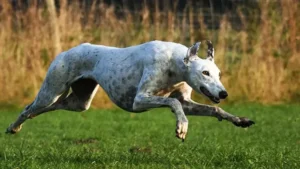

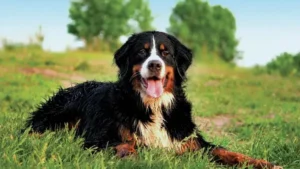


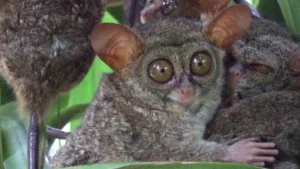

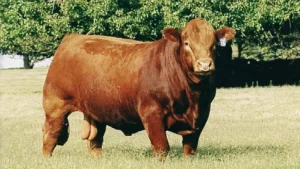
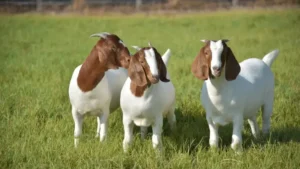
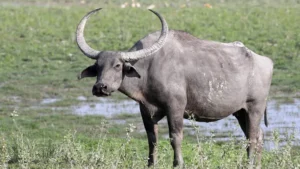


Leave your comment